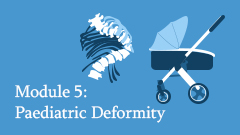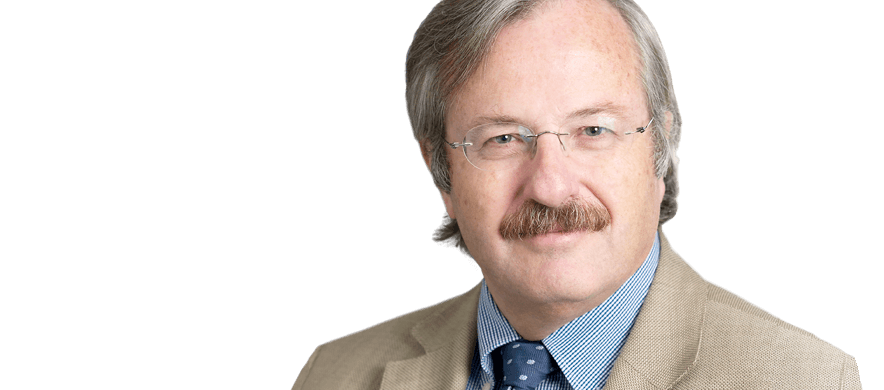
Module 5: Deformity and Malformation in Children and Adolescents
This Module deals with the paediatric and adolescent deformities of the spine, their etiology, pathomorphology, imaging and clinical presentation, and classification.
Examination: Once you have completed all Lecture Assessments successfully, contact support to arrange your 1-hour online examination.
Tutorial: Once you have completed your Module Examination, you will be eligible for the Module Tutorial - contact support to book onto the next one available.
About this module
This Module deals with the paediatric and adolescent deformities of the spine, their etiology, pathomorphology, imaging and clinical presentation, and classification. For better understanding, there is a focus on the growing spine at the beginning. Included is a presentation on spinal cord anomalies which play an important role in the context of congenital scoliosis.
Following on from the biomechanics of a deformed spine, there is a focus on treatment modalities, spanning cast treatment, brace treatment and the surgical treatment of the different pathologies. The different techniques and concepts of surgical treatment of paediatric and adolescent scoliosis, including modern navigation technology, are all described and discussed in the context of their appropriate indications. The practical preoperative preparation of the patient in the operating room is appropriately considered.
Learning Objectives
1. Understand ethiopathogenesis and natural history of paediatric and adolescent deformities of any ethiology
2. Be updated on spinal cord anomalies and congenital deformities in paediatric patients.
3. Learn about specific imaging and biomechanics of spinal deformities.
4. Understand indications and principles of conservative treatment in paediatric spinal deformities.
5. Learn principles for surgical treatment and describe the different surgical approaches and strategy to correct paediatric deformities
Module Structure
This Module consists of 23 online lectures, a Module Examination and a face to face Module Tutorial.Specific Target Group
- Spine Fellows* - In Orthopaedic or Neurosurgical services or independent spine services
- Practising spine surgeons - Independent or in Orthopaedic or Neurosurgical services for a potential recertification
- Orthopaedic or Neurosurgical residents - Who want to expand their general knowledge
- Non-surgical spine specialists - Interested in expanding their spine knowledge
Additional information
| CME Credits: | 69 CME credits available |
|---|---|
| Main Subject: | Paediatric Deformity |
| Duration: | The Module is available for 4 months from attending the first Lecture |
| Tuition Language: | Online content is in English, Tutorials can be presented in English or the local language |
| Fees: | See Enrolment Options box below. |
| Ref.ID: | 5_brayda-bruno |
Prerequisites:
Enrolment on the Post-graduate Spine Surgery Education ProgrammeMode of Examination:
Each Lecture has a final, multiple choice question (MCQ) online Examination.
At the completion of all the Module Lectures, a MCQ Module Examination is taken online, during attendance at a Module Tutorial.
Register with eccElearning
Sign-up and log in to the eccElearning platform. Once logged in, you can:
- Try a complete Lecture for FREE
- Find out more information about the Programme, Examinations, Tutorials, CME Credits and Lectures
- Purchase and enrol onto individual Modules
- Purchase and enrol onto the full Spine Surgery Education Programme
Register for FREE!
Register and login to the platform for more information about the course, view overview pages for all 180 Lectures, as well as view pricing information and special offers. You can also activate a Demo Lecture - one full Lecture from our Spine Surgery Education Programme. Complete the Demo Lecture successfully to obtain 3 CME Credits.
Need some help or have any questions about our courses? You can reach us via our contact form.
eccElearning Platform
Legal Info
eccElearning Spine Surgery Courses
eccElearning for Institutions
Contact eccElearning
Future Business Centre,
Cambridge, CB4 2HY, UK
Contact eccElearning




